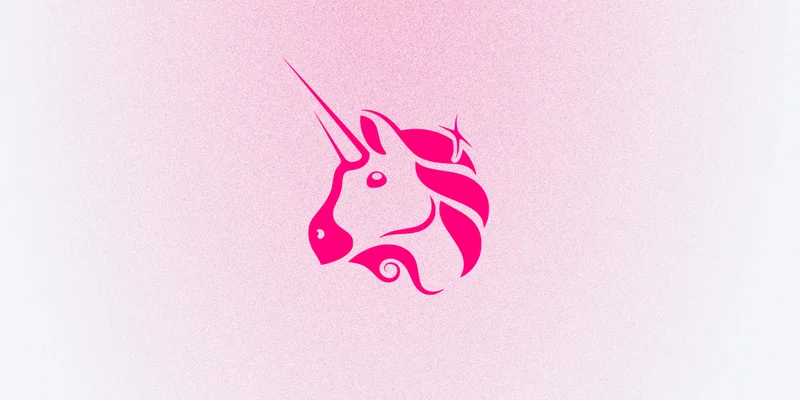Article Directory
For years, a single, almost mythical question has echoed through the digital halls of decentralized finance: “When will Uniswap flip the switch?” It was never just a technical question about protocol fees. It was a philosophical one. It was a debate about the very soul of these new economic machines we’re building. Do decentralized protocols exist purely as public infrastructure, or can they—and should they—evolve to directly reward the token holders who govern and sustain them?
For a long time, the answer was silence. We saw proposals come and go, debates rage, and a general sense of frustration build among the community. But on November 10th, that all changed. The silence was broken not by a whisper, but by a thunderclap: Uniswap Proposes Sweeping ‘UNIfication’ With UNI Burn and Protocol Fee Overhaul.
When I first read through the details, I felt a genuine jolt of excitement. This is the kind of elegant, system-wide thinking that reminds me why I believe so deeply in the potential of these decentralized systems. This isn’t just another tweak to the code. This is a declaration of intent. It’s the moment a brilliant, sprawling science project decides to become a sustainable, self-reinforcing digital economy.
The Engine Finally Connects to the Wheels
At its heart, the UNIfication proposal does what so many have been waiting for: it activates protocol fees. But how it does so is where the genius lies. Instead of a simple dividend, the proposal creates a powerful economic feedback loop. A portion of the immense trading fees generated by the protocol—we’re talking about a system that generates nearly $3 billion in annualized fees—will be redirected into a UNI burn mechanism.
Think of it like this: Uniswap has been a revolutionary engine, producing incredible horsepower but letting all that energy dissipate into the air. This proposal is the act of finally connecting that engine to the wheels. The “burn” is effectively a perpetual stock buyback program for a digital nation. By systematically reducing the supply of UNI, the proposal aims to make every remaining token more scarce and, theoretically, more valuable. It directly links the success and usage of the protocol to the wealth of its token holders.
And they’re not starting small. The proposal includes a retroactive burn of 100 million UNI from the treasury, a stunning gesture meant to simulate the value that would have been captured if this switch had been active from day one. It’s a powerful statement that aligns the past, present, and future of the protocol. But this raises a profound question, doesn’t it? What does it truly mean for a decentralized network to decide, collectively, to start rewarding its stakeholders? Is this the moment DeFi protocols finally grow up?

The plan goes even deeper, targeting complex issues like maximal extractable value—in simpler terms, it’s the profit traders can make by strategically ordering transactions—and proposes to internalize that value, feeding it back into the burn mechanism rather than letting it leak out of the ecosystem. This isn't just about rewarding holders; it's about making the entire system more robust, more efficient, and more aligned.
A Blueprint for a Digital Organization
If the UNI burn is the economic engine, the other half of the proposal is the new chassis and steering system. In a move that signals a dramatic shift from a decentralized, almost chaotic, development environment to a focused growth machine, Uniswap Labs is absorbing the Uniswap Foundation’s ecosystem teams. A new five-member board, including the co-founders, will oversee a single, consolidated strategy.
This is huge. Imagine a brilliant inventor who has scattered their blueprints and teams across multiple workshops. This is the moment they bring everyone back into one state-of-the-art facility with a single, unified mission.
That mission is now crystal clear: protocol growth. In a gutsy pivot, Uniswap Labs will set fees on its own popular products—the wallet, the interface—to zero. This seems counterintuitive, but it's a long-term play. By making its front-door products free, it aims to drive an immense amount of volume to the underlying protocol. This makes the entire ecosystem more competitive, attracts more users and liquidity, and guess what? All that new activity generates more fees, which fuels the UNI burn, which benefits all token holders. It’s the fee switch and the team consolidation and the product strategy all rolled into one cohesive vision that finally answers the question everyone’s been asking for years—it's a complete, holistic blueprint for the future.
Of course, we have to pause and consider the responsibility here. Such a powerful, top-down proposal from the core teams walks a fine line in a world that cherishes decentralization. Yet, sometimes, a system needs a jolt of focused leadership to break out of inertia and reach the next stage of its evolution. This feels less like a corporate takeover and more like the moment the founding fathers of a new nation come together to draft a constitution.
This reminds me of the early days of joint-stock companies, when the radical idea of distributing profits to shareholders through dividends first took hold. It transformed passive owners into active stakeholders, aligning their interests with the company’s long-term success. What we are witnessing with Uniswap is the digital equivalent of that paradigm shift, custom-built for the 21st century.
A Protocol Comes of Age
Let’s be clear: the 10% surge in UNI’s price isn’t just market speculation. It’s a collective sigh of relief and a roar of approval. It’s the market recognizing that Uniswap is transitioning from a piece of public infrastructure into a focused, value-accruing economic powerhouse. This isn't just a story about one protocol. This is the blueprint. We are watching the maturation of an entire industry in real-time, and other protocols will undoubtedly follow this path. This is the playbook for how a decentralized network becomes a self-sustaining digital nation, and its impact will be felt for years to come.
